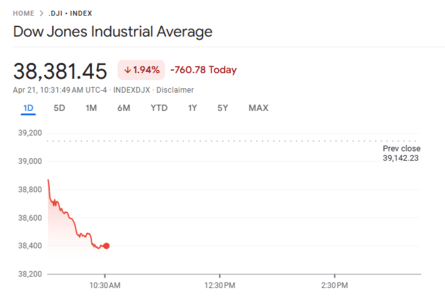Markets Diverge as Dow Falls, Nasdaq and S&P Rally Modestly
U.S. stocks finished mixed as investors balanced hopes from easing food tariffs with caution ahead of a key jobs report. The divergence highlights fragile sentiment that could ripple through global markets and commodity chains, making Thursday's employment reading a pivotal moment for investors worldwide.
Listen to Article
Click play to generate audio

U.S. equity trading ended in a pattern of contrasts on Friday as investors contended with shifting policy signals and the prospect of fresh labor market data. The Nasdaq composite, led by technology names that pared steep early losses, turned higher in morning trading and held modest gains into the close finishing 0.1 percent higher. The S&P 500 also managed to climb during the session. The Dow Jones Industrial Average lagged however and finished 0.7 percent lower, reflecting deeper pressure on economically sensitive and cyclically oriented blue chips.
The mixed performance followed the previous day when U.S. indexes recorded their largest declines in a month, underscoring a still unsettled market mood. Cryptocurrency markets added to the unease as Bitcoin declined, reinforcing a broader retreat in risk assets during pockets of the trading day.
At the center of investor attention was an announcement from the White House indicating a move to lower food tariffs, a policy shift with immediate economic and geopolitical reverberations. Lower tariffs could ease input costs for U.S. food producers and retailers, potentially tamping inflation pressures for consumers. Internationally the change alters trade balances and prices for major agricultural exporters, and it invites scrutiny from trading partners over adherence to existing commitments under international trade law.
The timing of the tariff move is consequential. Markets now face a high stakes employment report due Thursday that is likely to shape expectations for monetary policy. Investors and global central banks watch U.S. labor data closely because it influences the Federal Reserve's calculus on interest rates which in turn affects capital flows, currencies, and borrowing costs around the world. With equities diverging, bond markets and currency pairs could quickly shift once the jobs number is released.
For international investors the mix of domestic policy tweaks and macro data poses questions about the United States role in global supply chains. Lower food tariffs can change export opportunities for agricultural suppliers in Latin America, Africa, and Asia and may prompt strategic adjustments in production and shipping. At the same time emerging market economies that rely on commodity revenues or on remittances and investment from the United States may see ripple effects through trade and financial channels.
Market participants are also watching corporate earnings and tech valuations as technology stocks demonstrated an ability to rebound intraday. That resilience offers some support for equities even as cyclical sectors continue to feel pressure. Volatility remains elevated compared with recent months and traders say positioning into next week will likely be cautious.
As the calendar turns to the jobs report, investors will be weighing whether policy adjustments such as lower tariffs represent a meaningful easing of inflation risks or a targeted move with limited macro impact. The result will help determine whether the current pattern of mixed markets consolidates into a broader rally or resolves into renewed declines.


